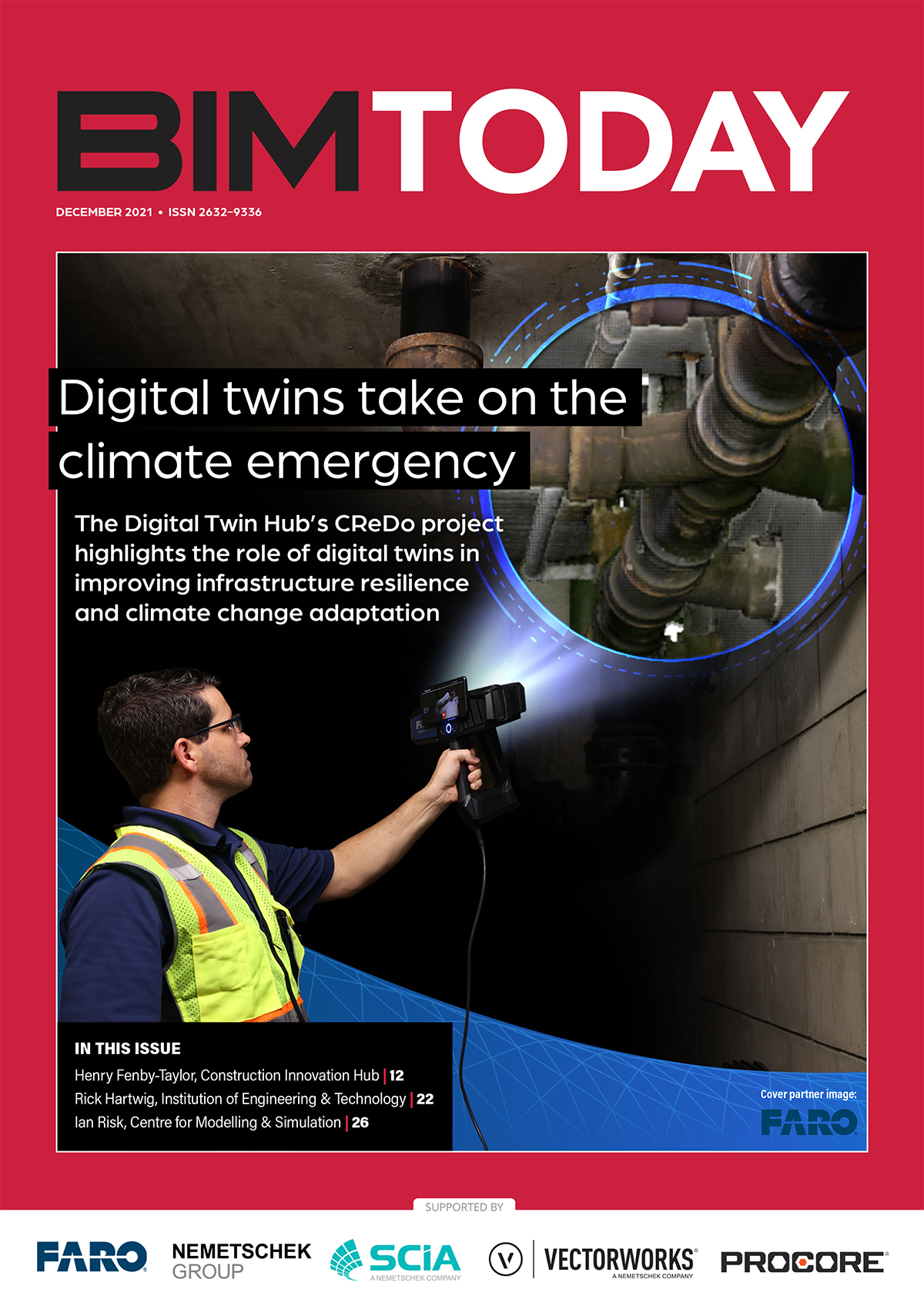Welcome to the December edition of BIM Today. In this publication, we explore the role of digital technology in helping the construction industry and the built environment to play their part in the UK’s push to net zero emissions
Our cover story looks at the launch of the Digital Twin Hub‘s Climate Resilience Demonstrator (CReDo) project, launched at the COP26 climate conference in Glasgow, which highlights the essential role of infrastructure in combatting the climate emergency and the role of digital twins in helping to plan for better adaptation and resilience.
Dr Zaid Alwan discusses the Digital Energy Estimation Tool (DEET), funded by the Centre for Digital Built Britain and Northumbria University, which is harnessing BIM and VR to visualise embodied and operational carbon emissions in the built environment. DEET was chosen by the Tyndall Centre for Climate Change Research to be exhibited at COP26.
Meanwhile, Ian Risk of the Centre for Modelling & Simulation argues that the digital engineering will be crucial in meeting net zero targets as we tackle the housing crisis, Gavin Bonner of Cundall examines the role of BIM in decarbonisation and Suna Taymaz, Simon Babes and Steve Gwynne of GHD look at how data can make communities more resilient to climate change.
Elsewhere, Rebecca De Cicco highlights the role of digital twins in asset information management, which offers enormous potential to take construction to another level, and Henry Fenby-Taylor of the Construction Innovation Hub explains the Digital Capabilities Framework, which aims to support and develop the digital skills of early career professionals across the built environment.
We also hear from Rick Hartwig, built environment lead at the Institution of Engineering & Technology, who discusses the importance of structured data and embracing digitisation in improving the performance and safety of construction products.
There’s much more besides. Here’s a selection of what in this edition:
At COP26, the National Digital Twin launched the Climate Resilience Demonstrator (CReDo) project with a short film, Tomorrow Today, highlighting the essential role of infrastructure in the climate emergency along with an interactive app to explore how connected digital twins can help plan for better adaptation and resilience.
A new Digital Capabilities Framework from the Construction Innovation Hub aims to support and nurture the digital capabilities of early career professionals across built environment disciplines. Henry Fenby-Taylor, information management delivery lead, explains.
The Digital Energy Estimation Tool, a collaboration between the Centre for Digital Built Britain and Northumbria University, is harnessing BIM and VR to visualise embodied and operational carbon emissions in the built environment. Sustainable construction expert Dr Zaid Alwan discusses the development of the tool, which was selected for exhibition at COP26.
Rick Hartwig, built environment lead at the Institution of Engineering & Technology, discusses the importance of structured data and embracing digitisation in order to improve construction product performance and safety.
With the spotlight on the UK after the landmark COP26, Ian Risk, chief technology officer at the Centre for Modelling & Simulation, believes digital engineering must be at the heart of building design if the industry is to succeed in meeting net zero goals while addressing the housing crisis.
Rebecca De Cicco, global chair for Women in BIM and principal for digital enablement at Aurecon, looks at the role of digital twins in asset information management.
How can we make the next decade count to underpin resilient, adaptable communities? Suna Taymaz, Simon Babes and Steve Gwynne of GHD take a look.
Gavin Bonner, head of digital engineering at Cundall, discusses the role of BIM and digital technology in decarbonising the built environment and why data is key to unlocking our net zero ambitions.
4D visualisation can boost project certainty for infrastructure firms post-pandemic, says James Dean, CEO of Sensat.
Using generative design with computational engineering allows carbon optimisation to inform structural designs, says Hannah Freireich of engineering consultancy Will Rudd.


